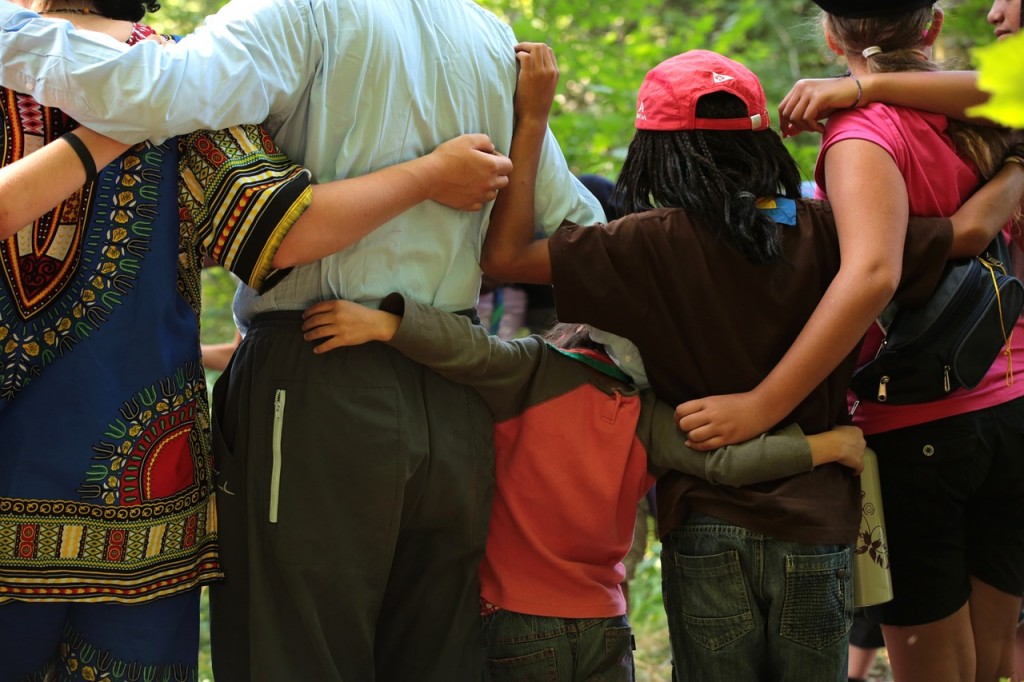This blog is contributed by Catherine Kearney. Catherine is one of City to City’s key connectors and she was involved in the London conversation in 2013.
As the African proverb goes ‘It takes a village to raise a child’. But what does this mean in daily life and what implications, if any, does it have on our cities?
Does it mean that parents cannot bring up children on their own? Is shared responsibility an ideal to aspire to?
Plenty of people testify that children are a blessing but few people would say that parenting is easy. Clinical psychologist, Oliver James, went further and wrote a survival guide to family life, entitling it “They f*** you up”. He argued that the way we are cared for in the first six years of life has a crucial effect on who we are and how we behave.
The poet Philip Larkin was the source of James’s expletive. Larkin’s poem concisely describes a cycle of dysfunction between generations:
They may not mean to, but they do.
They fill you with the faults they had
And add some extra, just for you.
For parents, this negativity, together with the intensity of the focus on the early years, is sobering, at the very least. So what about sharing the responsibility? Could this be where the village mentality might come in handy?
 If we recognise that parenting is not always easy, and we strive for the ‘good enough’ model rather than perfection, then surely parenting in isolation is going to be an uphill struggle – and not much fun. Individuals can feel excluded from society for a variety of reasons and parents are no exception. We need others. Parents need others.
If we recognise that parenting is not always easy, and we strive for the ‘good enough’ model rather than perfection, then surely parenting in isolation is going to be an uphill struggle – and not much fun. Individuals can feel excluded from society for a variety of reasons and parents are no exception. We need others. Parents need others.
Diversity
On Mother’s Day recently, BBC Radio 4’s Sunday Worship encouraged us to celebrate all women (mothers or not) for their part in contributing to the growth and development of others. This was followed a few days later by International Women’s Day. Yet parenting is not just for women and the need for fathers (or at least male role models) has been highlighted in the media and research. Families can be diverse groups of adults taking parental roles. Is this a community? A village within a city?
Empowering communities
Empowerment within a local community, in a grass-roots context can transform. Community development can strengthen civil society in a participatory and democratic way by giving voice to those who are disadvantaged and vulnerable. Empowerment offers a route to inclusion, belonging and community development. Likewise, it could be key to facilitating the ‘village’ mentality – the raising of a child by the city.
Empowering individuals through community
It is important to bear in mind that empowerment is not an individualistic or self-centred endeavour. The close link between the empowerment of the individual and the empowerment of the community has been highlighted by practitioners. Families are an integral part of all communities, and some would say that they sit at a critical junction between the individual and the community.
If we agree that there is a link between empowerment, community development and participation, the implication is that we all have a part to play. We are in the city together. We are with each other in this. ‘Empowerment is not something we can do to or for people (that is a self-contradictory notion),’ says Neil Thompson in his analysis of empowerment and power in human services. ‘It is something that we can do only with them.’ True empowerment is transformational.
Peer-led projects
Budget cuts in the UK mean that policy is adapted so that the families who need the most help get it. Few would argue with ensuring this happens. However, there’s a time bomb waiting to go off as the families with lower levels of need aren’t entitled to support services. The underlying message when a parent asks to attend a group or course is ‘Come back when you’re a bit more desperate.’ Communities are often divided by into haves and have-nots.
I have the privilege of working in a project running peer-led parenting courses. It’s a fantastic project to be part of, but although parent engagement can be challenging, it’s really not rocket science. In some cases, parents can be fearful that their children will be taken from them if they’re deemed not ‘good enough’. The project is evidence based – research has been carried out that shows the effectiveness of peer-led courses in reducing children’s poor behaviour and improving parenting skills. This is really good news but it’s only part of the story.
When you speak with parents who attend the courses, they tell you how the simple things like a cup of tea being made for them when they arrive and the kindness of the course facilitators makes the difference. Parents make relationships with other parents and course facilitators, who are also parents and have attended the course. Parents become empowered by the knowledge that they are not alone in parenthood or the challenges they face.
What I have seen happen through peer-led parenting groups is a reciprocal empowerment – a parent feels that they belong to a ‘village’ (a parenting community) and so the wider community is strengthened. At the same time their engagement with community life empowers them as an individual.
The effectiveness of these courses is clear from the parents’ enthusiasm. Parents say how life-changing the course has been for them. Its impact for some is far beyond the scope of a simple parenting course, where particular skills are taught. Parents start believing they can do something – they can help their children and they can play a part in their local community. They find they are part of a village in a city.



